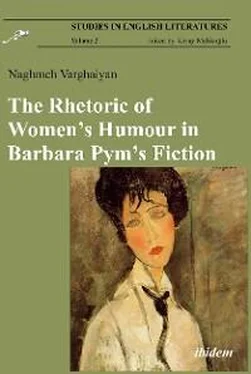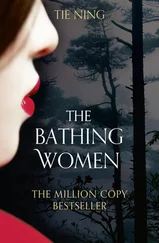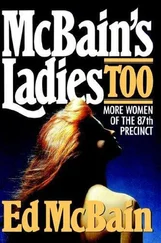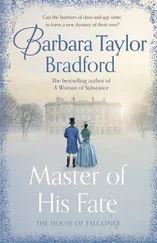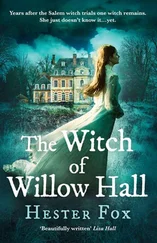ibidem-Press, Stuttgart
For my daughters, Nihal and Nilay, who made me laugh and thus helped me to survive. May the free-spirited women who struggle to survive find similar humour.
Contents
Acknowledgements Acknowledgements I began this study seven years ago in an environment in which neither women nor women’s humour were considered important by official culture. Nobody knew Barbara Pym or was concerned with women’s writing and humour. I began reading Pym’s Some Tame Gazelle for the funny reason that I liked her name. What stuck in my memory was Pym’s unique and specific humour. I decided to write my PhD dissertation on women’s humour in her novels. The path was thorny and long since there was no study on women’s humour at that time. However, I was lucky enough to have the support of my dear parents and friends, including my thesis advisor Assoc. Prof. Dr. Mustafa Zeki Çıraklı. I appreciate his help. I am also deeply thankful to Barbara Pym scholar Dr. Orna Raz for her invaluable encouragement, help and friendship. Years later, with the encouragement of my husband, I decided to rework my dissertation into a book. Orna Raz kindly accepted to write the preface. I am also grateful to Rose Little and Deirdre Bryan-Brown for providing me with Barbara Pym’s books from England. I thank Susan Mednick Bramson for sharing her views on Barbara Pym. The greatest thanks of all go to Assoc. Prof. Dr. Kerem Nayebpour, my husband, for his valuable comments, constant support, and kindness. He helped me to pursue my dream of a PhD and did all he could to provide a peaceful environment, so that I could study and write my dissertation. He also contributed much to the revision of the manuscript. This book could not be published without his contribution and support. I also appreciate and thank our dear friend, a painter himself, Buyuk Budagi, for his excellent suggestion for the front cover of this book. May the world one day acknowledge the importance of women’s literature and humour.
Abbreviations Abbreviations EW Excellent Women JP Jane and Prudence STG Some Tame Gazelle
Preface by Orna Raz
1 Characteristics of Women’s Humour
1.1 Myth of Women’s Lack of a Sense of Humour
1.2 Undermining Women’s Wit
1.3 Women’s Language and écriture féminine
1.4. Difference between Irony and Humour
1.5 Necessity of a Humour of One’s Own
1.6 Humour: A Female Device?
1.7 Misreading Women’s Humour and Images of Women
1.8 Lack of Ending in the Works of Women Writers
1.9 Differences between Conventional Humour and Women’s Humour
1.10 Women’s Humour and Socio-Cultural Restraints
1.11 Ideology of Domesticity and Domestic Comedy
1.12 Characteristics of Women’s Humour
1.13 Major Areas and Tactics of Female Humour
1.14 Self-Irony
1.15 Women Writers’ Humour in the Nineteenth Century
1.16 Humour as a Device of Sympathy
1.17 Female Humour and Narrative Structure
1.18 Rhetoric of Humour in Pym’s Novels
2 Some Tame Gazelle: Construction of Women’s Veiled Humour
2.1. Role of Rhetorical Strategies in the Construction of Women’s Humour in STG
2.1.1 Subversion of the Romantic Plot and the Discourse of Trivia
2.1.2 Belinda’s Double Text Discourse
2.1.3 Function of Gossip in the Construction of Humorous Narrative
2.1.4 Understatement and Self-Deprecation
2.1.5 Sympathetic Bond between Narrator and Heroine and among Characters
2.2. Function of Themes and Motifs in the Construction of Humorous Plot
2.2.1 Subversion of Female Stereotypes
2.2.2 Subversion of Male Images
2.3 Women’s Humour as Social Critique: Undermining the Institution of Church and Clergymen
3 Excellent Women: Humour of Mildred Regarded as an Excellent Woman
3.1 Rhetorical Strategies in the Construction of Women’s Humour
3.1.1 Understatement and Self-Deprecation
3.1.2 Mildred’s Double-Voiced Discourse
3.2 Themes and Motifs in the Construction of Humorous Plot
3.2.1 Subversion of the Stereotype of Excellent Woman
3.2.2 Subversion of Male Images
4 Jane and Prudence: Unconventional Wife and Satisfied Spinster
4.1 Jane’s Subversion of the Image of Conventional Clergyman’s Wife
4.1.1 Jane’s Creation of a Fantastic World
4.1.2 Jane’s Reversal of the Role of Serving Female
4.1.3 Jane’s and Prudence’s Use of Double-Voiced Discourse
4.2 Subversion of the Image of the Spinster and Prudence’s Creation of a Romantic World
4.3 Subversion of the Male Image by Exposure of Men’s Indolence and Self-Indulgence
Conclusion
Works Cited
I began this study seven years ago in an environment in which neither women nor women’s humour were considered important by official culture. Nobody knew Barbara Pym or was concerned with women’s writing and humour. I began reading Pym’s Some Tame Gazelle for the funny reason that I liked her name. What stuck in my memory was Pym’s unique and specific humour. I decided to write my PhD dissertation on women’s humour in her novels. The path was thorny and long since there was no study on women’s humour at that time. However, I was lucky enough to have the support of my dear parents and friends, including my thesis advisor Assoc. Prof. Dr. Mustafa Zeki Çıraklı. I appreciate his help. I am also deeply thankful to Barbara Pym scholar Dr. Orna Raz for her invaluable encouragement, help and friendship.
Years later, with the encouragement of my husband, I decided to rework my dissertation into a book. Orna Raz kindly accepted to write the preface. I am also grateful to Rose Little and Deirdre Bryan-Brown for providing me with Barbara Pym’s books from England. I thank Susan Mednick Bramson for sharing her views on Barbara Pym. The greatest thanks of all go to Assoc. Prof. Dr. Kerem Nayebpour, my husband, for his valuable comments, constant support, and kindness. He helped me to pursue my dream of a PhD and did all he could to provide a peaceful environment, so that I could study and write my dissertation. He also contributed much to the revision of the manuscript. This book could not be published without his contribution and support. I also appreciate and thank our dear friend, a painter himself, Buyuk Budagi, for his excellent suggestion for the front cover of this book.
May the world one day acknowledge the importance of women’s literature and humour.
EW Excellent Women
JP Jane and Prudence
STG Some Tame Gazelle
Ever since the 1950s, when her books first emerged on the literary scene, Barbara Pym has been roundly praised for her brilliant sense of humor. Her original audience appreciated her satirically incisive depictions of everyday life and her many slyly topical references, and contemporary readers continue to enjoy her sparkling wit and gently ironic social critique. Pym’s humor has also been the subject of much praise by other writers: Alexander McCall Smith has maintained that “Excellent Women is one of the 20th century’s most endearing and amusing novels,” while Jilly Cooper discloses that “even an umpteenth reading [of Jane and Prudence] this weekend was punctuated by gasps of joy, laughter and wonder that this lovely book should remain so fresh, funny and true to life.”
While Pym’s wit is generally acknowledged, very little specific research has been conducted about her employment of comic elements as a device. We might surmise that Pym’s humor has often been considered a merely decorative aspect of her novels, rather than an integral aspect of her craft, one that shaped her characterizations and plots, and formed an integral part of her protagonists’ engagements with – and the coping devices for navigating – the world depicted in her novels.
Читать дальше
